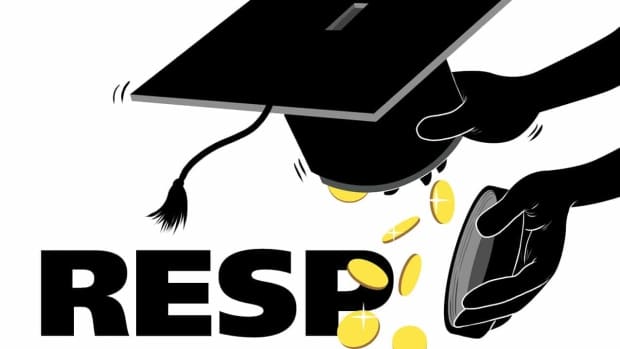
Parents in Canada want their children to be highly educated. They want them to have the best education there is, which is why the country’s literacy rate is around 99%. However, in recent years, education cost has steadily been on the rise, and for parents, that’s becoming an extra burden. Not to worry, Parents can start saving as soon as the child is born, and Govt also helps by contributing as Grants. This policy is known as RESP or Registered Education Savings Plan, and it’s a government initiative for parents to invest in their child’s future post-secondary education. Wondering what the advantage of this policy is? In RESP, the contributions made are After-tax Money, and there’s a 20% return(as Grants) on investments thanks to CESG, which Grows tax-sheltered. Sounds great. Well, read on to find out more.
More about RESP
A child’s parents or guardians generally open an RESP account; it can be grandparents as well. All you need is the SIN number of the Parents and the beneficiary’s social security number. You can open an RESP account in almost all the Financial Institutions of Canada, such as Banks, Insurance Companies, Mutual Fund Companies; once you open, you can contribute to a lifetime maximum of $50,000, which applies to all the accounts you open. If you contribute over the limit in a month, you would be getting tax at 1%, so it’s advisable to stay under the limit. Another advantage of an RESP account is that you can invest in stocks, bonds, exchange-traded funds, mutual funds, and much more with this scheme. There are different types of RESP accounts that you can invest in. Have a look at the list below:
The different types of RESP
When it comes to classifying RESP accounts, there are three types of RESP accounts that you can look into.
- Individual Plans: This plan is ideal if you’re only trying to manage your own child’s education and no one else’s
- Family Plans: This plan allows multiple beneficiaries, and the only obligation is that they all should be related by blood.
- Group Plans: Group RESPs are another option available to parents and guardians that may be appealing as the money is pooled with other people and managed by a plan dealer.
You can opt for any one of these plans for your child’s education.
How does it work, and what can it be used for?
RESP account can be used to fund your child’s higher studies, such as:
- Apprenticeship programs
- Colleges
- Universities
- Trade schools
You can contribute a maximum of $2,500 an accounting year, and an Extra 20% of the amount would also be deposited to the account through the CESG. If you save up more than that, you might not get the Grant on that portion. You can find out more about RESP by getting in touch with the team at Canadian LIC; they can share all the details you’re looking for.
RESP for Kids Education
Every parent dreams of their child’s future. Many times this future involves time in post-secondary education. Why not set your child up for a future full of success by beginning an RESP. Prices of post-secondary education can make parents hold their breath, as well as some students. Give your children an extra boost of confidence by taking away some financial worry.
What is an RESP and What does it do?
An RESP is known as a Registered Education Saving Plan. It is a government-assisted, flexible, tax-deferring investment. Anyone can contribute to an RESP once it’s opened. Parents, Guardians, Grandparents, Friends and Family can contribute from the time the it is opened, until the child is 18-years-old. The RESP can be opened from the time of your child’s birth, until he or she reaches 14 years of age. You can contribute up to $50,000, and you can do it all at once or spread it out over a period of time.
Once the child is ready to move on with post-secondary education, all the child needs to do to start accessing the RESP funds are two simple things. He or she needs a Social Insurance Number, or SIN, as well as proof of acceptance from a University, College or other Post-Secondary Institution. After having those, funds can be released. If the RESP received any grants from the government, that money will already have been deposited in the RESP.
Educational Assistance Payments, or EAPs, will start when the child is enrolled in post-secondary education. The payments are still part of the RESP, coming mostly from the grant money and investment earnings. Either parents or child can withdraw money, but the tax on the EAP is payable solely by the student.
Why Contribute To an RESP?
RESPs come with tax benefits, and all contributors get tax benefits too. The amount withdrawn from RESP will not be taxed until it exceeds the amount you put into the fund. All dividends, capital gains, and interest payments, earned in an RESP are not taxable.
What happens if the child doesn’t go to Post Secondary Education?
Don’t worry or stress if your child decides to wait, or simply take time choosing what to do. There is no rush, as your child doesn’t have to go to post-secondary education right away. The money will get returned to the financial institution, and will sent back to the contributors. Grants would not be redeemed and returned to the government.
An RESP helps your child’s education by giving the child a financial boost when facing the challenges of affording future education. An RESP creates a bright future, setting the student up to get the desired education.
Get The Best Insurance Quote From Canadian L.I.C
Call 1 844-542-4678 to speak to our advisors.

The above information is only meant to be informative. It comes from Canadian LIC’s own opinions, which can change at any time. This material is not meant to be financial or legal advice, and it should not be interpreted as such. If someone decides to act on the information on this page, Canadian LIC is not responsible for what happens. Every attempt is made to provide accurate and up-to-date information on Canadian LIC. Some of the terms, conditions, limitations, exclusions, termination, and other parts of the policies mentioned above may not be included, which may be important to the policy choice. For full details, please refer to the actual policy documents. If there is any disagreement, the language in the actual policy documents will be used. All rights reserved.
Please let us know if there is anything that should be updated, removed, or corrected from this article. Send an email to [email protected] or [email protected]

